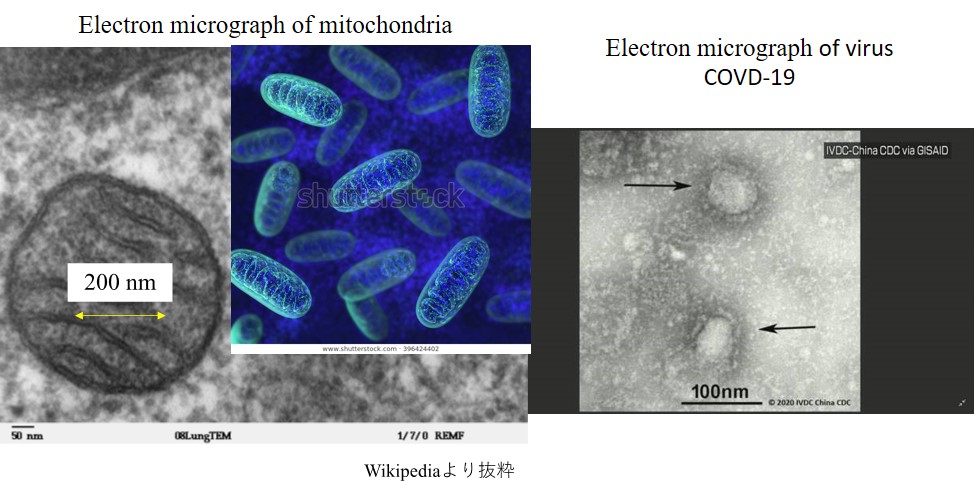
Mitochondria and cold virus
What are cold symptoms?
The virus that causes the common cold enters the respiratory cells through the process of contacting the respiratory skin. It is thought that the cold virus begins to multiply inside the cell for the first time. COVID-19 shown in the electron micrograph below is an endoplasmic reticulum of almost the same size as mitochondria, and it is thought that it proliferates by competitively using oxygen and glucose like mitochondria that bring about energy production. As a result, the intracellular proliferation of the virus is thought to swell the cell membrane. On the other hand, the superoxide radical anion generated in mitochondria suppresses the original process of calculating ATP, and reduces hydrogen peroxide accumulated in the intracellular mitochondrial cell wall to generate hydroxyl radical, which causes the mitochondrial cell wall to be generated. It is thought that it destroys and stops functioning, leading to respiratory skin cell death. We think that the respiratory cells in such a state may be “sputum”. A cold cough is presumed to be the result of removing sputum from bronchial epithelial cells from the throat to the lungs. If the cold becomes serious, it will cause pneumonia. It can be seen that the severity of colds is more common in older people with significantly reduced mitochondrial vitality.
We believe that colds can be prevented and life-threatening by the cold virus will not be threatened by keeping in mind the maintenance of mitochondrial activity and lifestyle-related habits.

